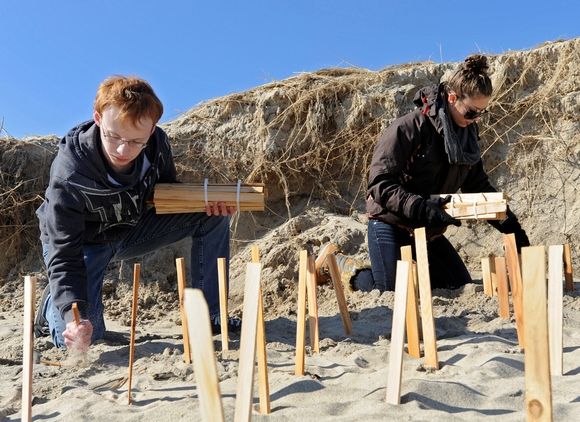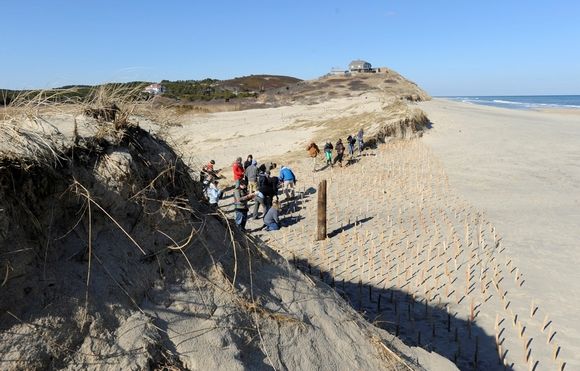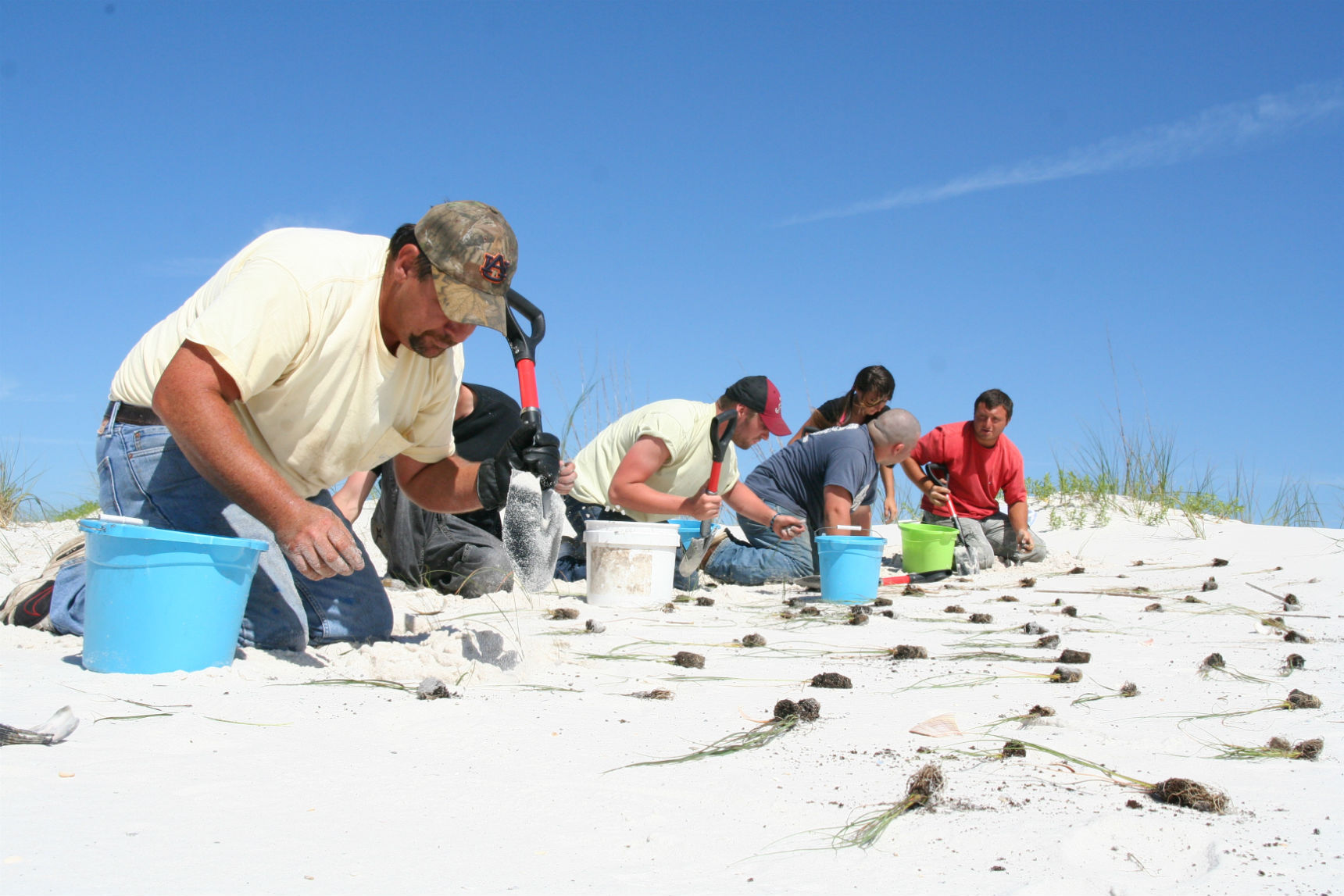The goal to stabilize coastal dunes impacted by development is not a new endeavor, but has been made visible recently with the recent impact of Superstorm Sandy on the Eastern Seaboard. The dunes are vital to the overall integrity of coastal zones, elimination of vegetation is often the result of development and other disturbances, and is exacerbated by strong storms and surges that are the result of climate instability. We’ve impacted these naturally resilient ecosystems to the degree where they can no longer self-heal, and thus require our conscious action to return this to functional integrity.
A slideshow in the Cape Cod Online shows a project by a group of professionals and students to use ‘biomimcry’ principles to help restore coast dunes. As noted in the BEN Blog: “Harwich High School Environmental Studies students learning about how natural vegetation stabilizes dunes, and how they can mimic natural vegetation’s structure and patterns by placing cedar shims in the sand.”
The students are working with a group called Safe Harbor, which takes an interesting approach to dune restoration a “simple system mimics the matrix profile of native vegetation to collect and stabilize sand. Like native vegetation, this system demonstrates performance inversely proportional to it’s profile.”
There’s a fair amount of research on the Safe Harbor site, including a PDF of of their Biomimcry work (30.9 MB PDF File) and in an interesting twist, they are offering the results in the public domain in the hope it will be used broadly for dune restoration. A video of the approach is found below:
The original article was published on the BEN Blog (from Biomimicry 3.8) and it begs the question of dune stablilization and whether the establishment of plants is considered biomimicry? Replanting the original species isn’t really mimicking anything, but is rather restoring the ecosystem to it’s reference state that is considered to be analogous to a natural, self-replicating system that would have been present pre-disturbance. From late 1800s restoration of the Back Bay Fens by Olmsted to 1960s dune restoration documented by McHarg in Design with Nature, to much restoration work today, the idea isn’t new.
Biomimicry, it seems, comes in with the intermediate ‘cedar shim’ installation that holds sands in place to allow berms to be shaped and re-established, prior to the planting of vegetation. The BEN Blog takes up the question at the end.
Is habitat restoration considered to be biomimicry? This can be a tricky question. If we are learning from the local organisms and ecosystem and mimicking natural processes, structures, and patterns, then the answer is yes. We want to learn what functions different organisms play and how they provide those functions. Usually this is done by planting vegetation, preferably native vegetation if it’s available. Sometimes an intermediate step is needed. Use of cedar shims on this beach is a short-term effort to mimic the sand-holding function of the dune vegetation. According to Safe Harbors’ website, “Biomimicry uses the same storm wind energy which eroded the resource area to rebuild it.” If this works and they can stabilize the beach, then the vegetation should get a chance to grow back and resume its role in stabilizing the dunes and creating conditions for other dune inhabitants to thrive.”
For this to be biomimicry, we need to make the leap to insert this intermediate stage into the ecosystem to create berms through use of the shims and active management (configuration, adjustment of depths, demarcation of paths). The question is, then, why not just skip the stage of cedar shims and use vegetation, which is the planned eventual end condition and the material that is being ‘mimicked’ rather that use an alternative material (such as this dune restoration in Louisiana, below)?
One answer may be cost, as plantings would cost more and be prone to die-back in interim stages of dune development as sand aggregates. The other may be time – as the plantings establishment and subsequent colonization may be accelerated through use of analog (cedar shims) along with strategic plantings, with greater survival and more vigorous dune establishment as a result. As i mentioned, the thrusting of the idea into the public domain, and the monitoring of existing installations for viability will be interesting to see how they do, and compared to more traditional berms established by just planting, or perhaps landform manipulation (imported or graded sand) and plantings.
A continuing conversation on this to happen for sure, and more upcoming on Biomimicry later this week. 3.8 billion years of background is a lot to cover!


